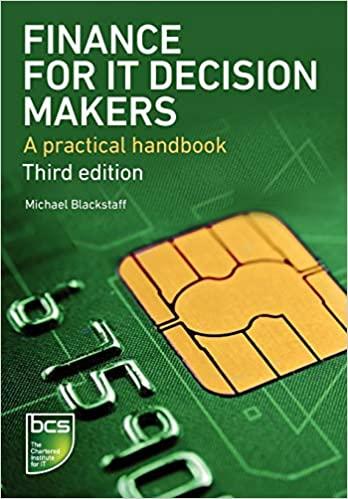Question
Question 1 In finance, January effect is the idea that January is usually a good month for investing. The theory predicts that every December, the
Question 1 In finance, January effect is the idea that January is usually a good month for investing. The theory predicts that every December, the stock prices will take a dip while the following month, it will receive a boost. This occur because of heavy selling during December while in January we will see aggressive buying. This idea was first coined by Sidney Wachtel, an investment banker in 1942. They are several explanation on this occurrence. One of it is tax-loss selling hypothesis by Branch (1977) where a taxpayer wishing to offset a gain or reduce ordinary income. The idea is that investors sell of their price-declined shares at the end of the tax year (December), in order to reduce to reduce tax liability. Another explanation explanation could be the fact that the small firms have a significantly higher risk (and hence an associated higher return) during the first month of each new year than during the following months (Rogalski and Tinic, 1986). One have to remember that evidence of January effect is a manifestation of the failure of efficient market hypothesis (EMH) to hold. Asteriou and Kavetsos (2003) suggested to test explicitly for January effects, to run the following regerssion equations
Rit = c + a2D2t + a3D3t + + a12D12t + ut (1)
where Rt indicates stock market return at time t, the intercept c represent the mean return for January, and the coefficients ai represent the difference between the return for January and month i. The null hypothesis to be tested in this case is that all dummy variable coefficients are equal to zero. A negative value of a dummy coefficients in Eq.(1) will specify which months have lower average returns than those obtained in January. The assignment task goes as this:
a) Collect monthly time series data for Malaysias stock markets return, from January 2000 until December 2019. Explain on how the market return is derive. There are various ways to get the data. One way is through Refinitiv Eikon (on-line) database. But you need the username and password from the UM Library. The video on Refinitiv Eikon training is available. (30 marks)
b) Using the data, run regression Eq.(1). Varieties of software are available. Since we cant access E-Views (not a freeware, but UM has subscription of this software. But you can download the student version for free, not sure on its limitation) outside UM, I suggest to use GRETL. It is a freeware and can be install on Windows, Mac or even Linux. I will provide special class session on basic of GRETL. Excel can also do the work.
c) Test the hypothesis of January effect existence in Malaysias stock market. Interpret the result.
d) Check for robustness of your result above. Give your comments
Step by Step Solution
There are 3 Steps involved in it
Step: 1

Get Instant Access to Expert-Tailored Solutions
See step-by-step solutions with expert insights and AI powered tools for academic success
Step: 2

Step: 3

Ace Your Homework with AI
Get the answers you need in no time with our AI-driven, step-by-step assistance
Get Started


